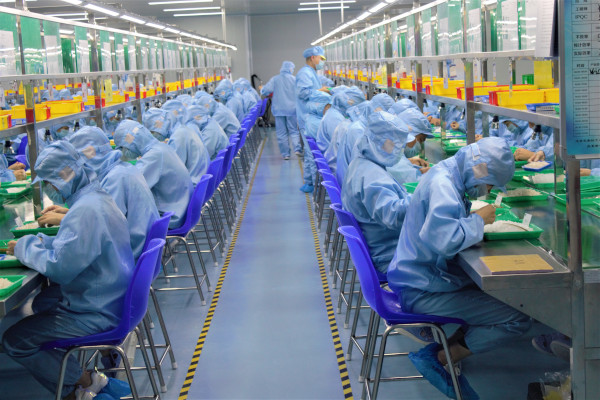Chinese manufacturers say UL certification proves that their vapor hardware is safe.
By Timothy S. Donahue
It’s a positive for the vapor industry. However, it’s also meaningless in the U.S., the world’s largest vapor market. Numerous vapor hardware manufacturers have produced Underwriters Laboratory (UL)-certified devices, but under current regulatory guidelines in the U.S., the safer products are often not allowed to be marketed. The exception to the rule is if the certified device had been marketed before Aug. 8, 2016, the cutoff date for new vapor products set by the U.S. Food and Drug Administration (FDA).
Several major Chinese manufacturers, including Aspire, Innokin, Joyetech, KangerTech, SmokTech and Vaporesso, have or will soon have UL-certified devices that were on the market before the FDA deadline; however, the hardware was certified after the deadline, and manufacturers have shied away from adding the UL logo because that could be construed by the FDA as altering the device. While the EU has allowed vapor products to innovate, the FDA has not permitted any new devices to be marketed in the U.S. since the Aug. 8, 2016, cutoff date. Vapor Voice recently visited with some of China’s leading vapor manufacturers in Shenzhen to discuss their efforts to get UL certified.
Joyetech has been an innovator in adopting UL standards. It was the first organization to receive a UL 8139 certification for its eGo AIO device, according to UL. Joshua Church, chief compliance officer of Joyetech, said that the UL standards are an important element to quality standards in the vapor industry. “UL compliance isn’t easy. It has taken a lot of time, money and effort to push products through the certification process,” he says. “Joyetech has been a leader in helping create and confirm these guidelines. Joyetech has its own ISO-certified labs and reinvests 50 percent of its profits back into R&D. Joyetech has its own UL-certified testing lab (or witness test data lab).”
Through UL’s witness test data program, tests may be conducted at customer or third-party test facilities under the supervision of UL personnel. Currently, Joyetech is the only manufacturer in China other than UL with a witness test lab. SmokTech’s lab, however, is nearly complete.
Welfer Ou, CEO of SmokTech, says his company’s products are used by more than 80 million vapers around the world, and choosing to get products UL certified was just a way to show customers that SmokTech is dedicated to making industry-changing innovations under the highest standards of safety and quality.
“We had our Novo pod system UL certified very quickly after the UL guidelines were confirmed,” says Ou. “We have spent a lot of time and money in equipment to be able to complete the required testing under UL standards. The FDA has stated that a PMTA [premarket tobacco product application] recommendation could involve UL 8139 certification, and we are working on having all of our models receive UL certification.”
George Xia, co-founder and vice president of Innokin, says consumer safety and producing quality products are a part of Innokin’s ethos. However, the vapor market is changing very fast, and competition is getting fiercer. Xia says he sees having devices UL certified as a way for a company to set itself above the competition.
“The Kroma-A and Zenith kit were the world’s first variable output mod certified UL 8139,” says Xia. “It is one of the best-selling mods internationally. We have been paving our own trail in R&D, and Innokin will continue to work closely with UL on the certification of existing and future devices. We are committed to constantly improving our manufacturing and quality control [QC] standards that are already some of the best in the industry. Innokin devices are always focusing on safety and durability. It has become a part of our core culture, and our customers enjoy these qualities.”
A global safety consulting and certification company, UL collaborates with a diverse array of stakeholders to create standards that generate level playing fields to help develop new pathways for innovation. The organization’s UL 8139 guidelines evaluate the safety of the electrical, heating, battery and charging systems while also addressing fire safety concerns raised by North American fire officials. The new UL standard has been published with the acceptance of the American National Standard Institute and Canada Standards.
UL 8139 requirements include determining if lithium cells are operating within safety windows, assessing the battery management system for both regular use and likely misuse, and evaluating compatibility among interconnected systems. The UL 8139 requirements also consider wide environmental parameters and conditions, tests for reasonably expected mechanical stress in use/misuse and requires devices to direct venting away from the inhaler.
UL 8139 standards were written specifically for electronic nicotine-delivery systems (ENDS) and are part of the larger UL 1642 standard that covers a wide array of lithium-ion products. To qualify for UL 8139, the battery cells must be internalized, meaning that the standard 18650 e-cigarette battery can never be certified or listed under the UL standard if it’s changeable or not inside a battery pack. However, it can receive a UL “Recognized Component Mark” or “RU.” This quality mark can be applied to components that are affiliated with a UL-listed product.
Currently, KangerTech does not have a UL-certified device. This will change soon, however, according to Danny Zhu, founder and chairman of KangerTech. “We are working on getting some of our products UL certified,” he says. “It isn’t about being first; it is about doing things the right way the first time. We are also now actively working on breakthrough technology that focuses on some common issues such as leakage. In a few months, KangerTech will have new products that will address the concerns of the consumer. This will improve the customer experience. That is most important to KangerTech. This technology will be applied to both open and closed systems and will, for the first time in the industry, combine the battery and cartomizer to make the system work better.”
Eve Wang, the director of sales and marketing for Vaporesso, said that UL is certifying e-cigarettes to enhance consumer safety, and that’s one of the same goals Vaporesso has. “At Vaporesso, we have a real drive to give people a vaping lifestyle that is not only safe but up to our high standards,” she says. “First and foremost, we built up a panel of experts to study and understand the requirements of the UL certification. Then, we had the team look at our existing product portfolio to ascertain that we definitely shared the same vision. Even with our early stage products, like the Tarot Nano, we had the same mindset. We sent out the device to UL for testing, and based on the feedback we received, we made small adjustments to obtain our certificate successfully. The Tarot Nano is one of our earliest and most popular devices, released in early 2016.”
Tony Lau, president of Aspire, says that battery quality is a major factor in achieving UL certification. In order to guarantee the quality of batteries in Aspire products, Lau opened his own battery factory. “Yes, we are continuing to put products through the UL 8139 certification process,” says Lau. “We will also send materials from our battery factory and other suppliers to a third-party testing facility to test the quality of materials and [see] if it meets our standards. The third-party is a global standards company. Every batch is tested for quality, size … if it is OK from a production standpoint. This is critical to maintaining high QC standards.”
Because the FDA doesn’t allow new vapor products on the market that have been introduced after its deadline, many companies are selling their improved products in other markets, such as Asia and Europe. Vaporesso states that the FDA’s rules don’t prevent the company from innovating. “We are constantly striving for new ways to bring safer, more advanced devices to the entire market, not just the U.S.,” said Wang. “So, by continuing to work closely with the FDA and making sure our premarket tobacco product application certificates are processed as smoothly as possible, we hope to be able to make all of our new innovations available for everyone as quickly as possible.”
Ou says that SmokTech’s quality control is internally controlled to maintain a high level of success. The company places a major focus on the R&D process, which needs to be strong and consistent from the single sample to mass production. “We want to be able to control the high quality expected in a Smok product,” he said. “Our biggest advantage is quality control. If the quality is bad, people can only trust you the first time. We want to be trusted repeatedly. We want to be a global brand, not just a Chinese brand.”
Wang adds that Smoore (Vaporesso’s parent company) is also putting its pod system, the Renova Zero, through the UL certification process, and more existing products with the UL certification will be released soon. “We will make UL certifications standard for our future products by making it our R&D standard,” she says.
Church said he couldn’t be more pleased with how Chinese manufacturers have embraced UL certification. “The UL standards are a way for a company to prove that their products meet a high level of safety and quality,” he says. “This isn’t just saying, ‘Oh, our products are safe.’ This is proving our products are safe.”


